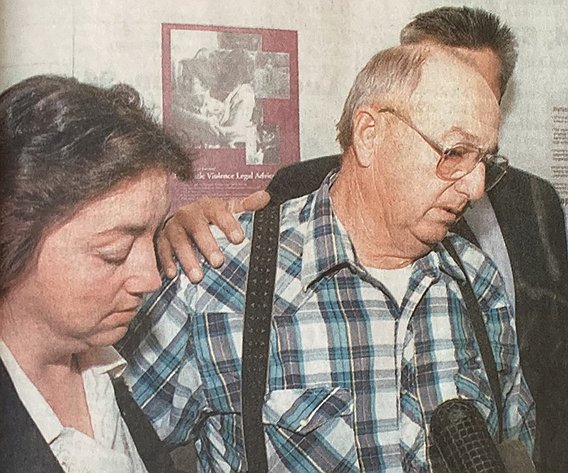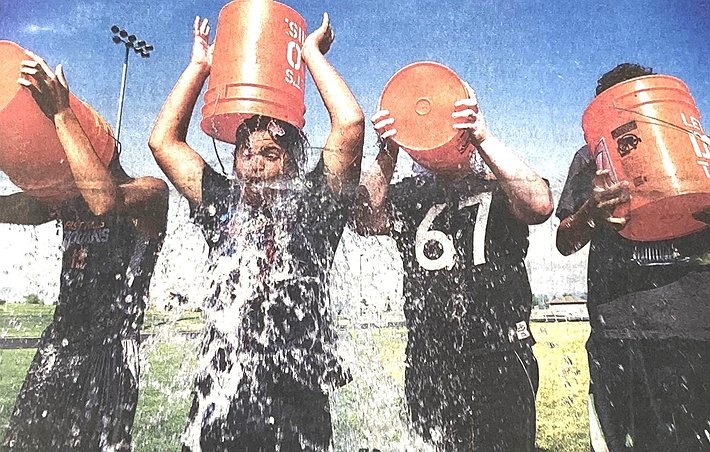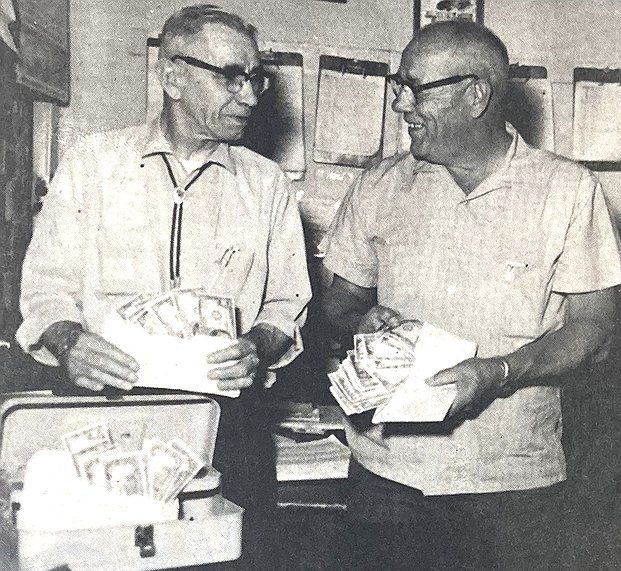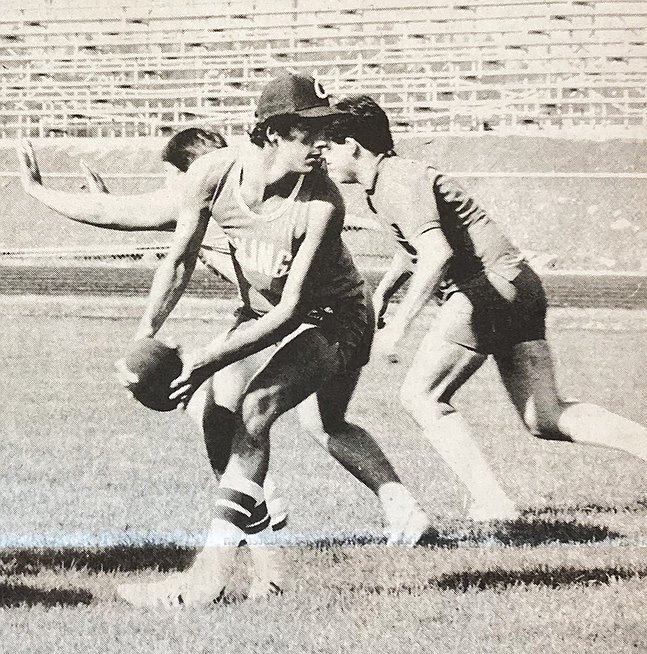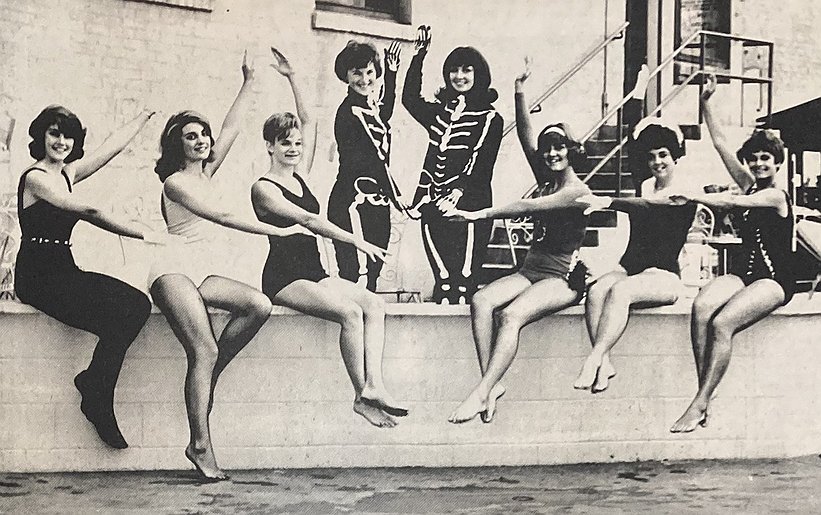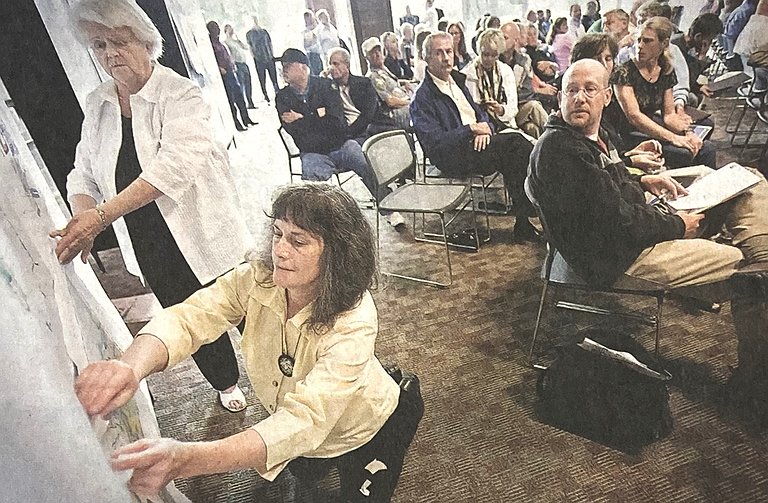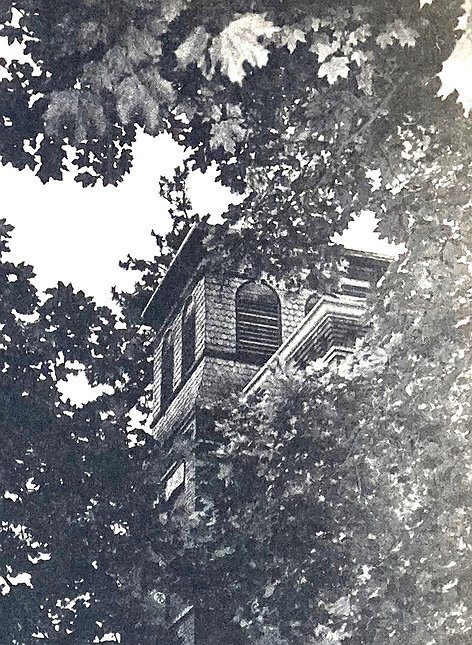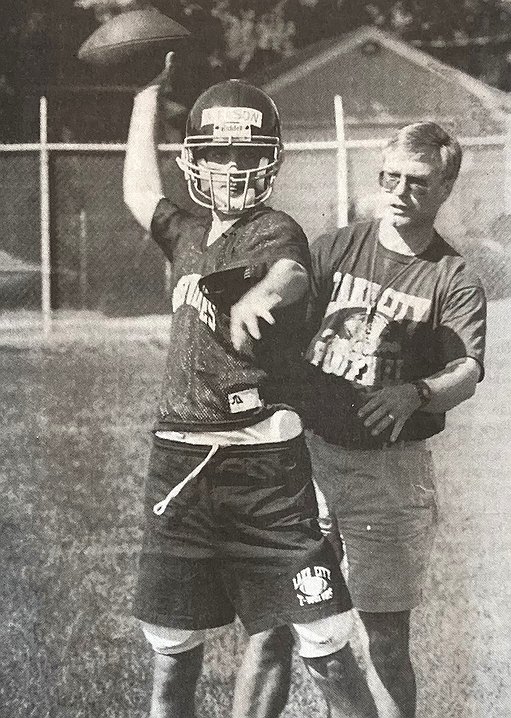HUCKLEBERRIES: A light in the dark
On Aug. 17, 1959, Irene Bennett’s world caved in.
At 11:37 that night, Irene, her husband, Purley, and their four children were sleeping on the banks of the Madison River, near Yellowstone National Park, when the earth shook.
The Dalton Gardens family had camped in the path of the Hebgen Lake Earthquake, the second largest one in the continental United States at the time, registering 7.5 on the Richter scale.
The quake compromised the Hebgen Dam, 7 miles away, and triggered a massive landslide from a 7,600-foot mountain that dumped 80 million tons of rock and earth into the Madison River.
The tremor killed 28 people, including Irene’s husband, Purley, 41, and three of their children: Carole, 17, who was preparing for her senior year at Coeur d’Alene High, Tom, 11, and Susan, 5.
Irene, then 39, and son, Philip, then 15, dug out of the debris, seriously injured, according to newspaper accounts. Both had broken legs. And Irene had lost most of her top layer of skin. A miner found them crawling on their hands and knees along a dry creek bed.
“Thank God, you found us,” Irene reportedly told her rescuer, “We have crawled all night. Where are my children?”
According to a report, Irene knew her husband was dead before she and Philip were taken to the hospital at Ennis, Mont. Then, one by one, searchers found the bodies of her three other children.
In August 2003, Irene, then 83, told the Bozeman Chronicle: “If Phil hadn’t lived, I wouldn’t have cared whether I lived or not. I didn’t think I had anything to live for if it hadn’t been for him.”
Irene credited her faith in God for the strength to endure and move on — a faith she tapped the night of the quake as she called out for her family until Philip answered weakly.
“I saw the moon was out,” she told The Spokesman-Review in 1995. “It was a brilliant moon. I recited the 121st Psalm, my favorite: ‘Lift up mine eyes onto the hills from whence cometh my help.’”
A Rev. Hawthorne, from Coeur d’Alene, told The Press what he witnessed when he visited the two Bennett survivors in the Montana hospital: “I braced myself before meeting them, not knowing what I could do to comfort them. When I left, I knew they had comforted me. They have accepted the tragedy with the most spectacular example of confidence in God I have ever seen.”
Irene and Philip returned to Coeur d’Alene afterward. He graduated from high school; she earned a teaching degree. Three years later, she married her high school sweetheart, Jack Dunn, a Hope dairyman. And was hired to teach at Clark Fork Elementary.
In 1998, Irene published a book about the earthquake, her family, and her life afterward: “Out of the Dark.” And, according to the Bozeman Chronicle, her recollections of that fateful night are part of a video that is shown every 30 minutes at the Earthquake Lake Visitors Center, near Ennis, Mont.
“I observe the Aug. 17 date in my heart,” she told the Bozeman Chronicle. “Of course, I think of it — all the birthdays.”
Blind justice?
Scott Yager is alive today because he was sentenced to life in prison without the possibility of parole — instead of death — for the murder of ISP Trooper Linda Huff on June 18, 1998.
And that sentence by District Judge James Judd on Aug. 16, 1999, angered Linda’s family. And fellow officers.
Ed Laughlin, Linda’s father, called the verdict “a slam to law enforcement in general and my daughter especially.” Debbie Plummer, Linda’s sister, said the killer didn’t deserve mercy.
Even chaplain Dan Lynch reacted negatively.
The retired San Francisco police officer called for Judge Judd’s removal from the bench and said: “I’ve never been exposed to such an atrocious decision. I’ve seen (California) juries let people go, but I’ve never seen a judge not impose a sentence that was so obvious.”
Prosecutor Bill Douglas, however, offered a different opinion: “The good thing is that this defendant will never be able to kill another human being in cold blood.”
So far, so good.
All wet
A decade ago, this area, like much of the globe, was dumping ice water over its collective noggins — and loving the result. Remember?
It was the summer of the ALS Ice Bucket Challenge. And North Idaho was all in.
On this day in August 2014, the Post Falls High football team joined the movement.
Defensive end Bradley Noesen and his mother, Joni, organized the event. Said Joni, whose husband suffered from the disease: “We need to bring as much awareness to this horrible illness as we can. I mean, I know pouring ice over your head isn’t the end-all-be-all, but at least it’s putting it out there.”
Worldwide, the Ice Bucket Challenge succeeded in raising awareness, as well as $115 million, in the fight against horrible ALS, better known as Lou Gehrig’s Disease.
Pot of gold
Most would ignore a stranger from out of state who seeks help in finding a treasure buried in the woods. But not sheriff’s deputies Cliff Johnson and Gordon Hood.
In August 1964, the two officers took a treasure hunter at least half seriously — and found his $10,460 in crisp $100 and $50 bills.
The distraught man had a vague idea that he’d hidden the money near Fourth of July Pass during a nervous breakdown. His only clues were words he scribbled on a map.
This led the deputies to a logging road off the summit. A mile in, the stranger recognized a large stump near an outcropping of rocks. So the digging began. And two metal boxes of cash were found under 3 inches of dirt and twigs. The search lasted about five hours and covered 40 miles.
The grateful man was soon on his way home with his money. But not before he had exchanged the cash for a certified check.
Huckleberries
• Poet’s Corner: On Sherman, life is very sweet;/we eat our lunch out by the street/amid the rap songs cars let loose/and watch the tourists pet the moose — The Bard of Sherman Avenue (“Downtown in the Summer”).
• Humble Beginning: Long before his No. 17 was retired at the UIdaho, and long before he played 10 years in the NFL, John Friesz was a backup QB at Coeur d’Alene High. In 1984, entering his senior year, his football pedigree was so iffy that he was described by The Press simply as “a contender for starting quarterback.” And there’s probably a moral to this story.
• Do You Remember: Twenty years before synchronized swimming became a thing at the Olympics, the 20-member Coeur d’Alene Aquanettes performed at the old Desert Hotel pool. In August 1964, the Aquanettes, under the direction of Diane Austinson, planned two shows of 11 numbers each, titled “Aqua-Holidays.” The swimmers had organized in 1963.
• Memoriam: Has it been five years (Aug. 13, 2019) since we lost Deanna Goodlander, a lover of all things Coeur d’Alene? Deanna was one of the three councilors who stood steadfast with Mayor Sandi Bloem on a series of 4-3 votes to overhaul McEuen Park. And caught heck for her visionary efforts. Her fingerprints are all over other worthy community projects, too.
• For the Record: On Aug. 12, 1974, the Coeur d’Alene School District agreed to exchange the abandoned Roosevelt School property at First and Wallace for 10 acres at Nursery and Ramsey roads. The district planned to build a $5M elementary on its new property.
Parting shot
The transformation from Viking to Timberwolf didn’t happen at the first-ever fall practices for Lake City High sports 30 years ago (Aug. 15, 1994). The LCHS athletes who turned out for football, girls soccer, volleyball, and cross country were still thinking blue and white instead of teal and navy blue.
But, according to the Coeur d’Alene Press, they were excited to be part of something new.
“It might take three games or so before it sinks in,” said footballer Brian Russell.
The Timberwolves would lose all nine football games that first year, including 35-0 in a historic first meeting with more experienced Coeur d’Alene High. But they would become a state football power and dominate the Viks during Coach Van Troxel’s 22 years at the helm.
On that first Monday of practice, however, running back Cory Caveny was trying to get his tongue around “Timberwolves.” Said he: “It is a basketball nickname. It just sounds weird right now.”
• • •
D.F. (Dave) Oliveria can be contacted at dfo@cdapress.com.












